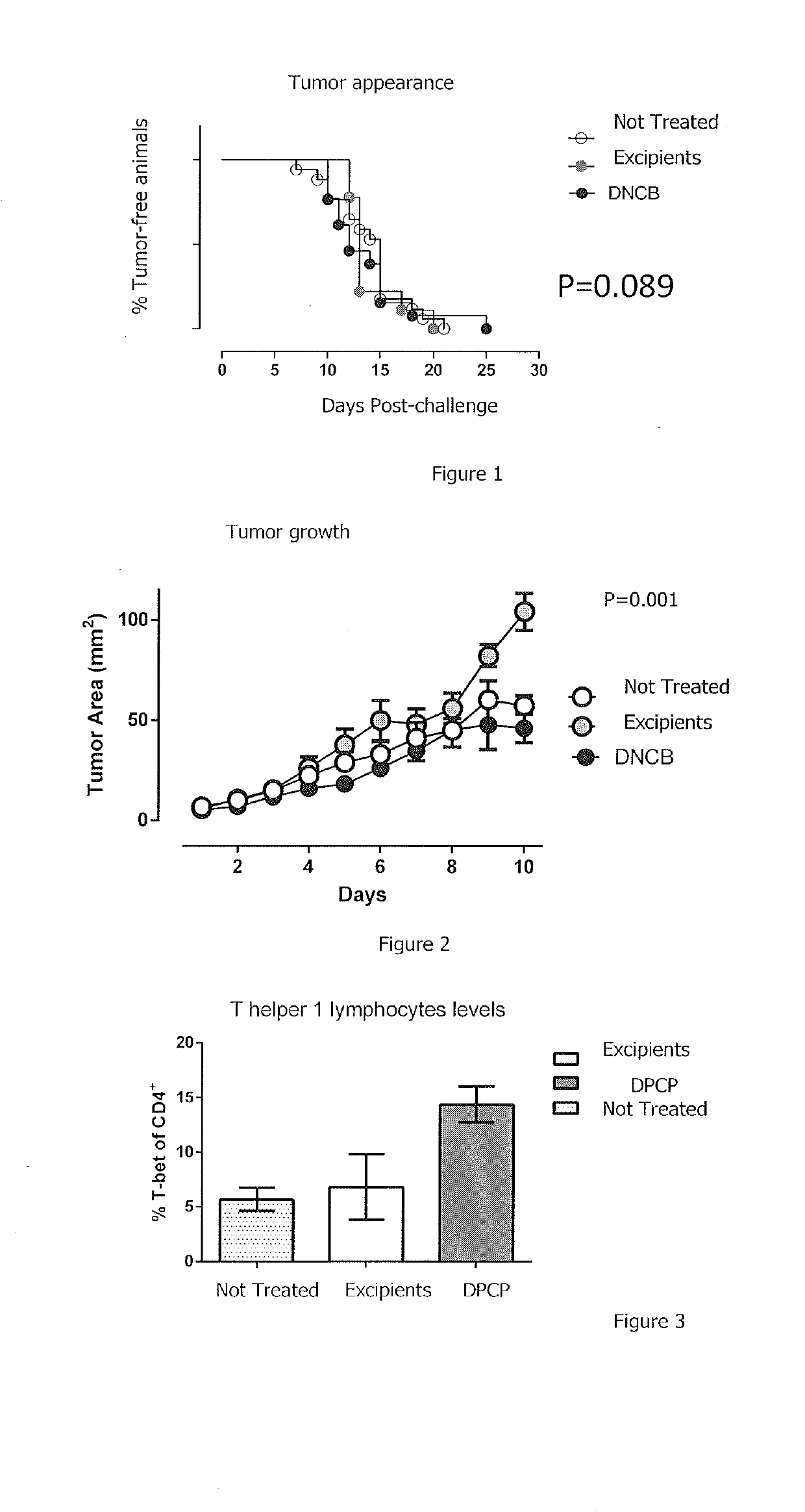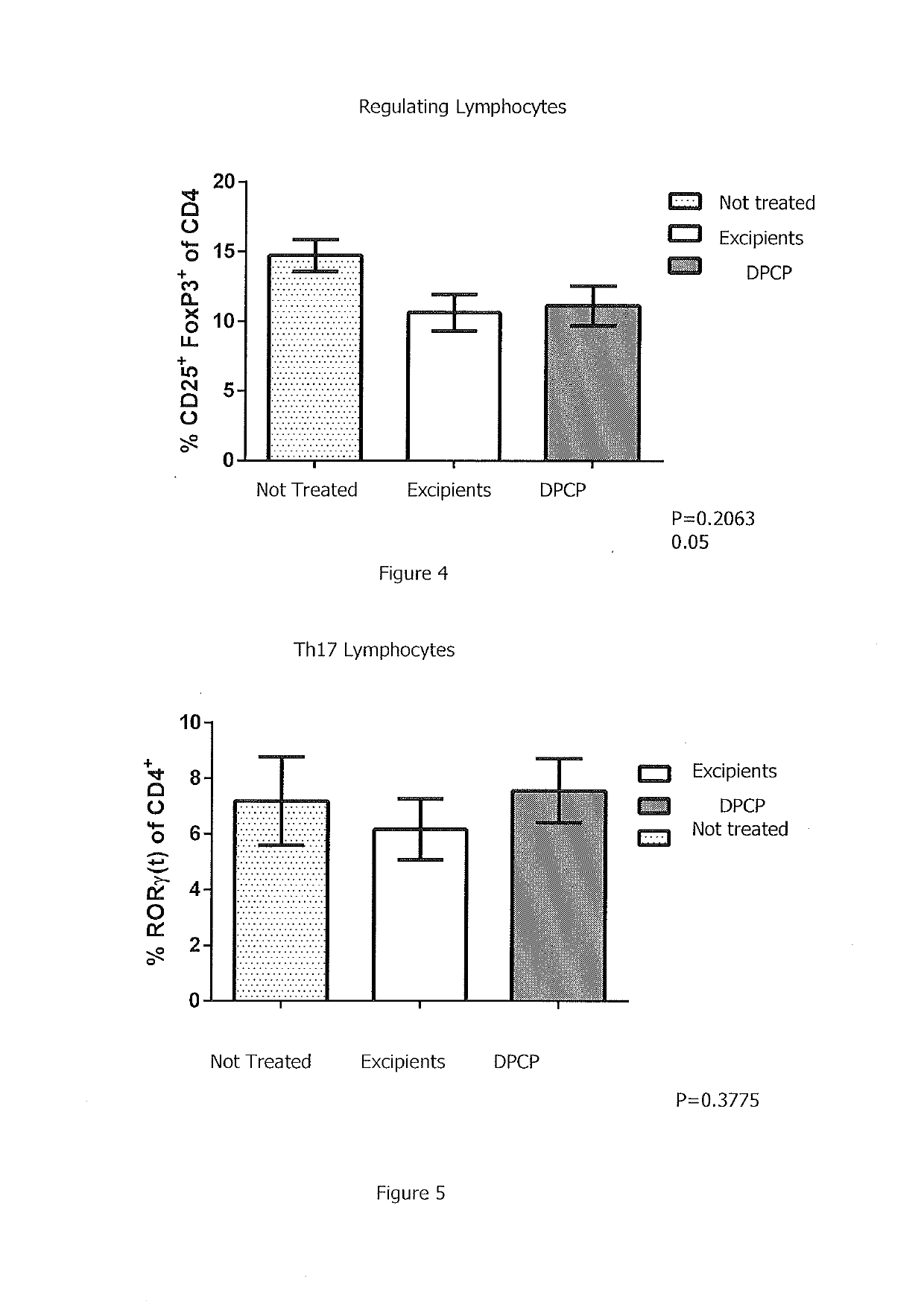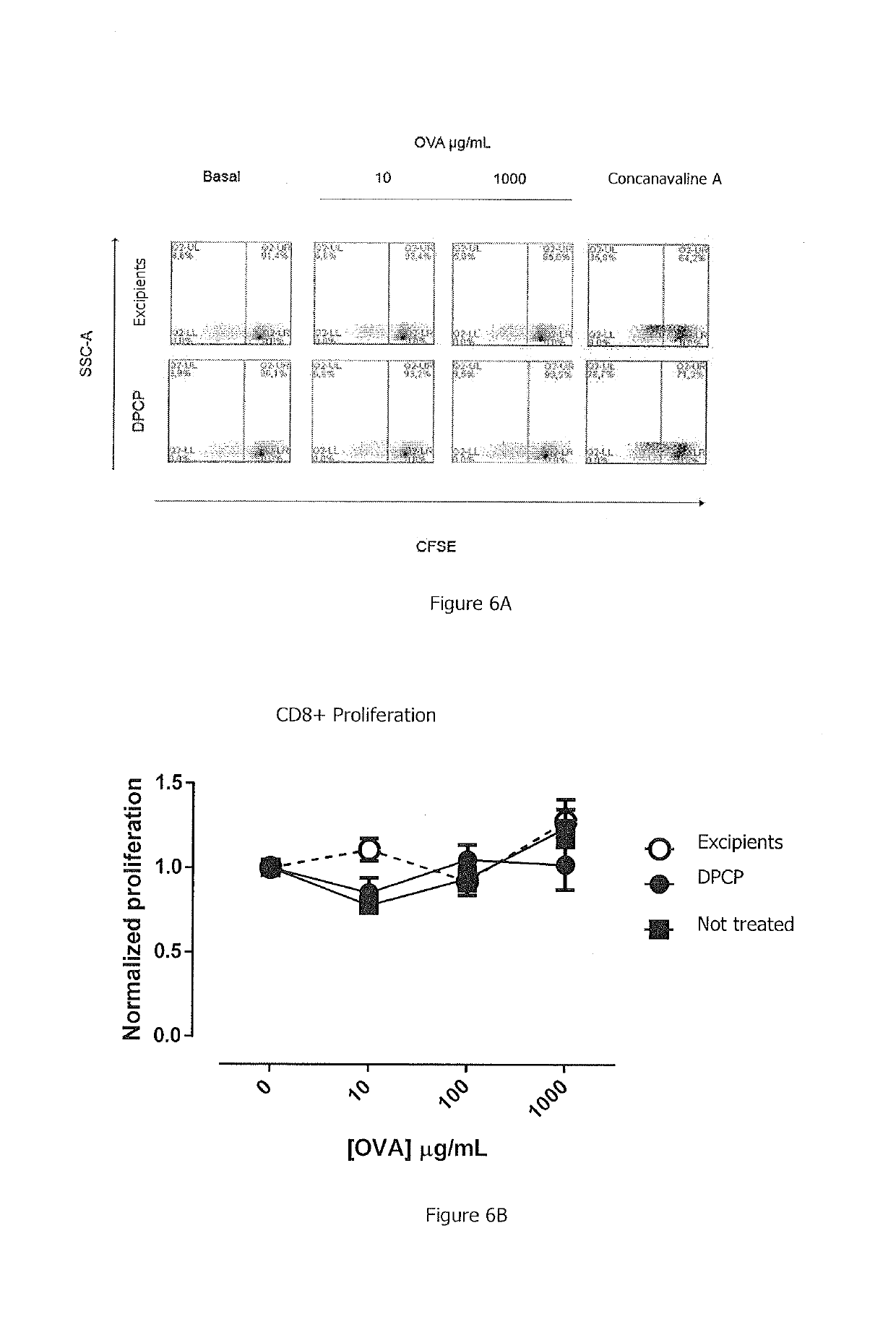Topical natural lithraea caustica extract composition and use thereof in tumours
a technology of natural lithraea caustica and composition, which is applied in the direction of antineoplastic agents, medical preparations, pharmaceutical delivery mechanisms, etc., can solve the problems of poor prognosis, surgical resection is no longer effective, and the likelihood of lymph node infiltration or systemic lithraea caustica is greater
- Summary
- Abstract
- Description
- Claims
- Application Information
AI Technical Summary
Benefits of technology
Problems solved by technology
Method used
Image
Examples
example 1
REATMENT DIPHENCYPRONE (DPCP)
[0046]The effect of topical treatment with 0.1% diphencyprone in mice of the B6 strain transplanted tumor model was evaluated bl6. For which initially the animals were challenged with live cells reaching generating detectable tumors between 10 days until day 20 post challenge (FIG. 1). Tumor growth has a linear behavior reaching a peak at day 7 post near challenge (FIG. 2, black circles). Diphencyprone treatment induced a shift of the curve tumor appearance from an average detection of 13 to 16 days in treated animals, however, this change was not significant. Tumor growth when considering time 0 to the tumor mass was detected, shows no difference in the growth of control animals, treated with excipients, regarding treated DPCP (FIGS. 1 and 2, gray circles). For both cases the analysis of linear growth curves of both has no significant difference when comparing the slopes. Value p=0.85.
example 2
LYMPHOCYTE POPULATIONS
[0047]To analyze the effects of this treatment on lymphocyte populations T to determine if there was an analogy to these clinical cases effect, the treatment effect level spleen lymphocyte populations CD4 and CD8 was evaluated also subpopulations CD4 CD25 foxp3 which realizes regulatory T cells, the CD4+population Tbet+which realizes THL population and the presence of CD4+population+Ror range which realizes TH17 population. Treatment with DPCP associated tumor challenge, induced an increase in Th1 population present in spleen (FIG. 3). The analysis of mice treated b6 at least 8 experiment allows the characterization that this population increased compared to control animals, however, not be significant. Th17 population and the Treg population showed no change in the animals treated with excipients, with respect to control animals (FIGS. 4 and 5). No significant changes were observed in CD8 or CD4 populations associated with treatment (data not shown). Value p=0...
example 3
RESPONSE AGAINST TUMOR CELLS
[0048]To assess whether a systemic response against tumor cells and a specific activation was induced, it was evaluated whether treatment with 0.1% to 1% DPCP induced generation of specific cell responses against OVA, for which the ability to induce proliferation was determined in culture by adding exogenous OVA, marking the splenocytes with the fluorescent marker carboxyfluorescein succinimidyl ester CSFE and marking CD4 or CD8 subpopulations with antibodies specific for these populations (FIGS. 6 and 7). The presence of positive populations that recognized OVA was not determined, but if non-specific proliferation was observed in response to concanavalin A. Together these results suggest that the curative treatment in mice with DPCP not have major effects on tumor model.
PUM
 Login to View More
Login to View More Abstract
Description
Claims
Application Information
 Login to View More
Login to View More - R&D
- Intellectual Property
- Life Sciences
- Materials
- Tech Scout
- Unparalleled Data Quality
- Higher Quality Content
- 60% Fewer Hallucinations
Browse by: Latest US Patents, China's latest patents, Technical Efficacy Thesaurus, Application Domain, Technology Topic, Popular Technical Reports.
© 2025 PatSnap. All rights reserved.Legal|Privacy policy|Modern Slavery Act Transparency Statement|Sitemap|About US| Contact US: help@patsnap.com



